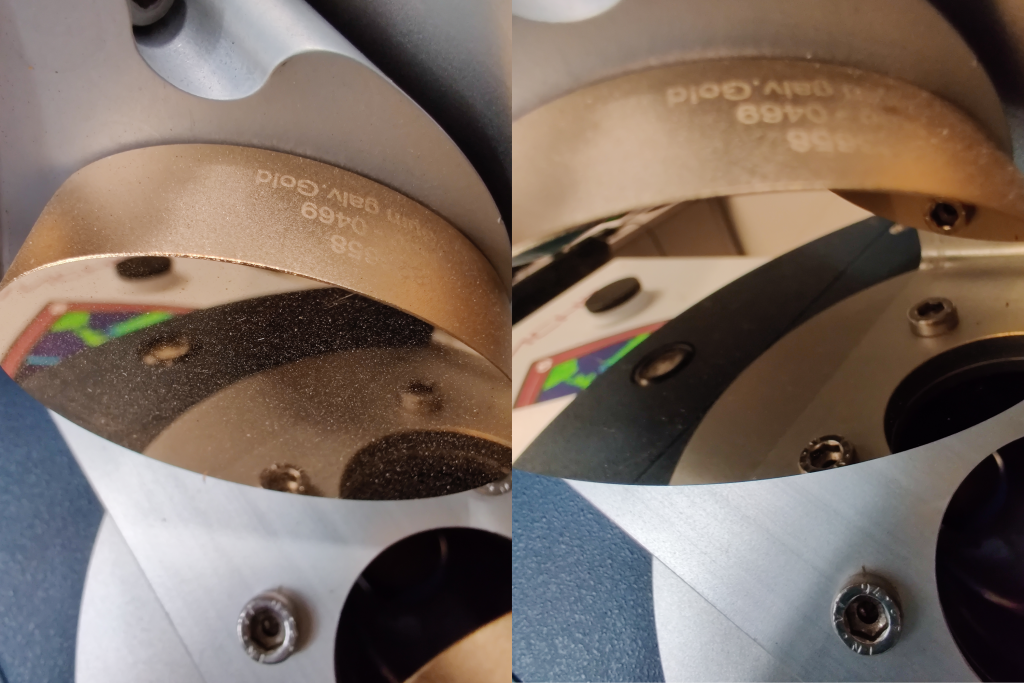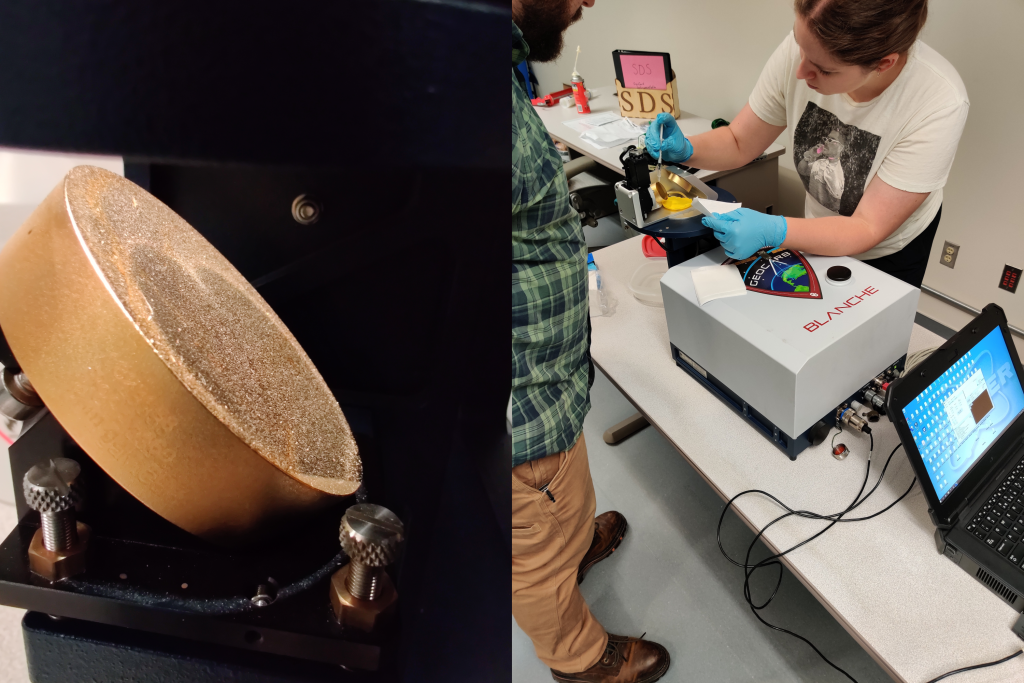Why We Are Cleaning EM/27Sun Mirrors
During GeoCarb’s efforts with the Houston Tracer campaign, the sensitive gold mirrors got dirty. Very dirty. The dust and grime in Houston still covered things even when covered in our custom enclosure. At one point, a stray blade of grass flew in and slapped the mirror, leaving a smattering of xylem sap on the surface. It is important to keep optics clean. If particles of dust are similar in size to the wavelength of light the instrument measures, errors may occur. If the grime on the mirror has chemical structure near what is measured, more errors may occur. So once the intensive operating period of TRACER was complete, we began cleaning EM27/Sun mirrors.
Unfortunately, the EM27/Sun manufacturer does not offer a method to clean the mirrors. The standard response on this topic was “just don’t get the mirrors dirty.” This is not very helpful. A few individuals with the company offered suggestions without sticking to the company line. These were varied and often conflicted with each other. There is no clear policy for cleaning EM27/Sun mirrors. The simplest option, oil-free compressed air, proved ineffective. The dust was just too stuck for the pressure I could generate. Certain members of the academic community made suggestions, but these were often overkill. Some required disassembly of the optics, but we did not want to risk alignment issues. Others suggested optical cleaning polymers, but those seemed like overkill for the job. Still others suggested ultrasonic bath submersion, but that was some equipment I do not (yet) have in my lab. We opted to use a solvent wipe method.

Materials
For supplies, I thought hard about what would reduce risk of damage to the mirrors within cost bounds. I remembered which dust-free wipes we used in graduate work, so I ordered a few of those from McMaster. Even though gold is resistant to acids, I did not want to risk damaging the support. This means that I chose to use an organic solvent over something like dilute nitric acid. Again, to protect the supporting seals, I did not want to risk anything non-polar or reactive. So there goes my favorite, acetone. Instead, we opted to use a high purity alcohol. I grabbed some reagent grade ethanol from the store room, and we were ready.
Method
NOTE: The following is presented as our experience. It is not advice. If you try this method and it goes poorly, don’t blame me. If the manufacturer makes better suggestions for cleaning optics in the future, follow those guidelines. Do not void your warranty. Always wear appropriate PPE for the task.
Use oil-free compressed air to remove as much dust as possible in a laboratory setting. Place a small lid or shallow cup below the mirrors while they are still attached to the EM27/Sun. Use a pipette or eyedropper to gently drop or spritz the surface with ethanol. Let the solvent remove as much as possible. If spots remain, use a drag-and-drop method to wipe the surface. Avoid wiping the gold mirrors as much as possible, as the surface is sensitive to scratches. Cleaning EM27/Sun mirrors is very delicate work. Take your time. Without removing the mirrors before cleaning, the user will need to get in weird positions. Imagine flossing a giant tooth with an index card.
I let Elizabeth Spicer, my colleague, handle the cleaning. As the master’s student in charge of the EM27/Sun, she needed to learn by example more than this old hand. Our experience went well. If you look at the before-and-after picture in this post, the results look good. The surface was not marred by our gentle cleaning and the dust is gone. The quartz window of the EM27/Sun was the most difficult to clean for us, since that is where the grass landed. For this, we had to use a slightly less-gentle wipe technique. We encourage others to avoid that method without the requisite optics experience.
